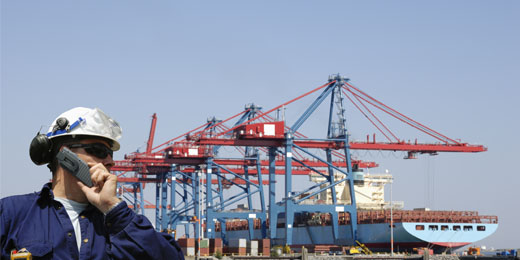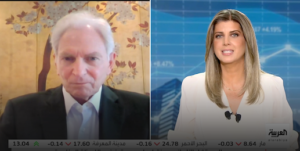The op-ed titled “The New Oil Normal Paradigm“, co-authored with Patricia McCall is reproduced below; this appeared in the Summer 2016 edition of Gulf Affairs. The magazine can be accessed at: http://www.oxgaps.org/gulf-affairs/publications/energy-and-the-state–the-impact-of-low-oil-prices/
The prospect of sustained lower oil prices over the next decade will have profound implications for the oil-dependent economies of the Gulf Cooperation Council (GCC). However, this era of low prices offers an unprecedented opportunity to implement economic diversification strategies and reform policies that will underpin more sustainable and resilient economies.
With oil prices ranging between $35-45 per barrel, the GCC economies have to revise their fiscal plans and budgets to reflect significantly lower revenues. Oil comprises 85 percent of revenue for GCC governments, and the 70 percent decline in oil prices since June 2014 has had a huge impact on budgets: GCC budget deficits are expected to run to about 13 percent of GDP in 2016. The GCC countries, however, are able to finance the high deficits by drawing on accumulated fiscal buffers and substantial international reserves or by borrowing to offset the negative effects on economic growth. But this is a short-term palliative and cannot be sustained given the unfavorable prospects for oil prices.
Addressing the challenges
To address the challenges of lower oil prices, the GCC should undertake fiscal reforms and develop
programs and incentives for greater private sector participation, including privatization of public sector activities (e.g. health, education, transportation) and public-private partnerships (PPP). Phasing out of unsustainable subsidies (as done by the UAE) should be accompanied by increasing
the prices of public utilities alongside increased revenue diversification policies via the introduction of broad-based taxes like VAT; property and corporate profit taxes; excise taxes on commodities like cigarettes, sugary drinks, alcohol, luxury cars; and others. These necessary fiscal reforms would improve fiscal outcomes and, by reducing the size of government, promise a new developmental model based on the private sector, leading to an improved investment climate and improved growth prospects.
The UAE is a successful case of economic diversification. Non-oil revenues in the UAE topped AED 200 billion ($54 billion) in 2015, representing 52.6 percent of UAE consolidated government revenue. The growth in these revenue streams is supported in particular by Dubai, which has led the region in greater economic diversification by focusing on developing alternative sources of income from trade, finance, tourism, transportation, logistics, and manufacturing. However, implementing policies to diversify GCC economies away from hydrocarbon dependence requires structural reforms, industrial policy design, and a holistic approach that includes investment climate reform to attract foreign investment and support business start-ups. These reforms are imperative for the over- arching policy objective of job creation. Governance and transparency tend to be less emphasized in resource-rich economies, as the major firms are few, government-owned, and opaque. But creating a more diverse and competitive economy will require legal and regulatory reform and commitment by government and public institutions to be more transparent in order to avoid private sector capture and crowding-out.
The largest Arab economy, Saudi Arabia, will be the hardest hit by lower oil prices—the IMF estimates the country’s budget deficit at $106 billion in 2015, a tad higher than the official figure of $98 billion. Additionally, the April 2016 revision of the IMF’s World Economic Outlook cut the expected 2016 growth rate of Saudi Arabia by a full percentage point, down to 1.2 percent. The kingdom has significant domestic demands, including employment and wage growth expectations from Saudi youth, who account for over 60 percent of the population. The oil crisis has resulted in growing strains on job creation. The Saudi government added 93,000 new employees to the public payroll in 2015 compared to 103,000 in 2014. In the private sector, expansion slowed to its lowest rate since 2009—companies hired 43,000 fewer Saudis than they did the previous year.
Providing jobs and opportunities to qualified graduates will require a vibrant and internationally competitive private sector able to compete with the public sector for employees. Given Saudi’s budget constraints, government will no longer be able to subsidize high salaries and must look increasingly to the private sector to provide job growth. The private sector should be incentivized by ‘education-for-employment’ programs, market-skills building, and subsidized private sector on-the-job training coupled with education reform.
Regional rebuilding
The oil price tsunami and collapse of government revenues comes at a difficult time, especially as the need for GCC financing in the region is growing. Unemployment, low economic growth, and conflicts have led to soaring reconstruction costs.
With a conservative estimate of $1.4 trillion required to rebuild Syria, Iraq, Yemen, and Libya and to support growth and infrastructure development, the region needs a new growth and development paradigm underpinned by sustainable revenues. These resources should be invested in rebuilding devastated regional economies in order to reduce unemployment and counter one of
the main sources of extremism. Infrastructure investment is key to recovery, reconstruction, and future growth prospects. The economic rationale is strong: every $10 billion investment in infrastructure can create around 2.5 million direct, indirect, and induced infrastructure jobs in the MENA region by boosting growth by roughly three percent among oil exporters and about 1.5 percent among oil importers in the region in the short-term.
But funding will not be so ample and forthcoming given oil crisis-hit budgets and growing domestic demands. For the region to meet the increased demands it will need to both ensure strong economic growth in stable GCC countries and develop institutions regionally that can support reconstruction. Several regional initiatives have been advanced to meet these challenges: The Arab Bank for Reconstruction and Development and the Arab Stabilization Plan. These organizations not only highlight the need for reconstruction finance, they emphasize the need for private sector participation, job creation, and development of the financial sector in the region. These are all requisites to promote greater economic and revenue diversification, which is important both in the GCC and the broader region to underpin sustainable and sufficient economic activity.
Dr. Nasser Saidi is President of Nasser Saidi & Associates. Patricia McCall is the Executive Director of the Centre for Economic Growth at INSEAD in Abu Dhabi, UAE.





